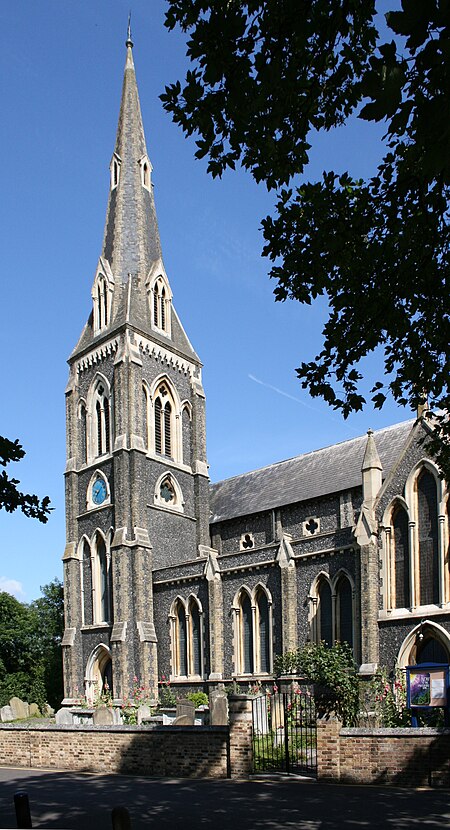St Mary's Church, Hanwell
19th-century Church of England church buildingsChurch of England church buildings in the London Borough of EalingDiocese of LondonGeorge Gilbert Scott buildingsGothic Revival architecture in London ... and 6 more
Gothic Revival church buildings in LondonGrade II* listed buildings in the London Borough of EalingGrade II* listed churches in LondonHanwellRebuilt churches in the United KingdomUse British English from February 2015

St Mary's Parish Church is a Church of England church situated at the western end of Church Road in Hanwell, West London. It dates back to (at least) the 12th century.
Excerpt from the Wikipedia article St Mary's Church, Hanwell (License: CC BY-SA 3.0, Authors, Images).St Mary's Church, Hanwell
Church Road, London Hanwell (London Borough of Ealing)
Geographical coordinates (GPS) Address Phone number External links Nearby Places Show on map
Geographical coordinates (GPS)
| Latitude | Longitude |
|---|---|
| N 51.513752777778 ° | E -0.34761111111111 ° |
Address
The Parish Church of St Mary, Hanwell
Church Road
W7 3BX London, Hanwell (London Borough of Ealing)
England, United Kingdom
Open on Google Maps









